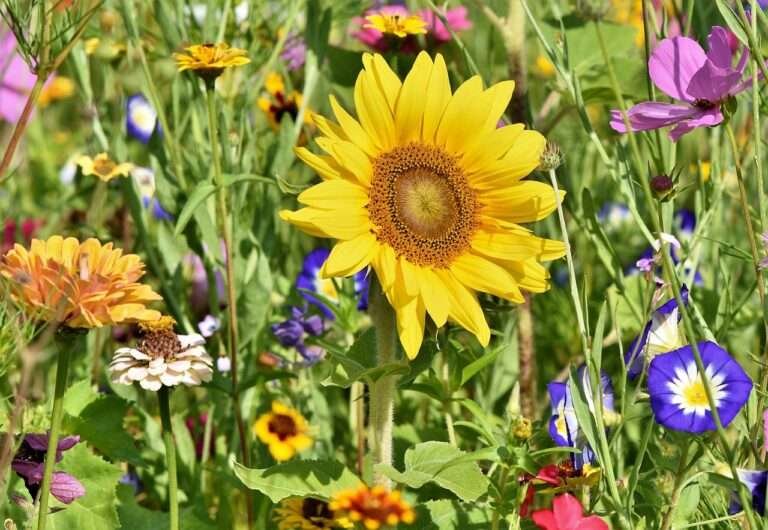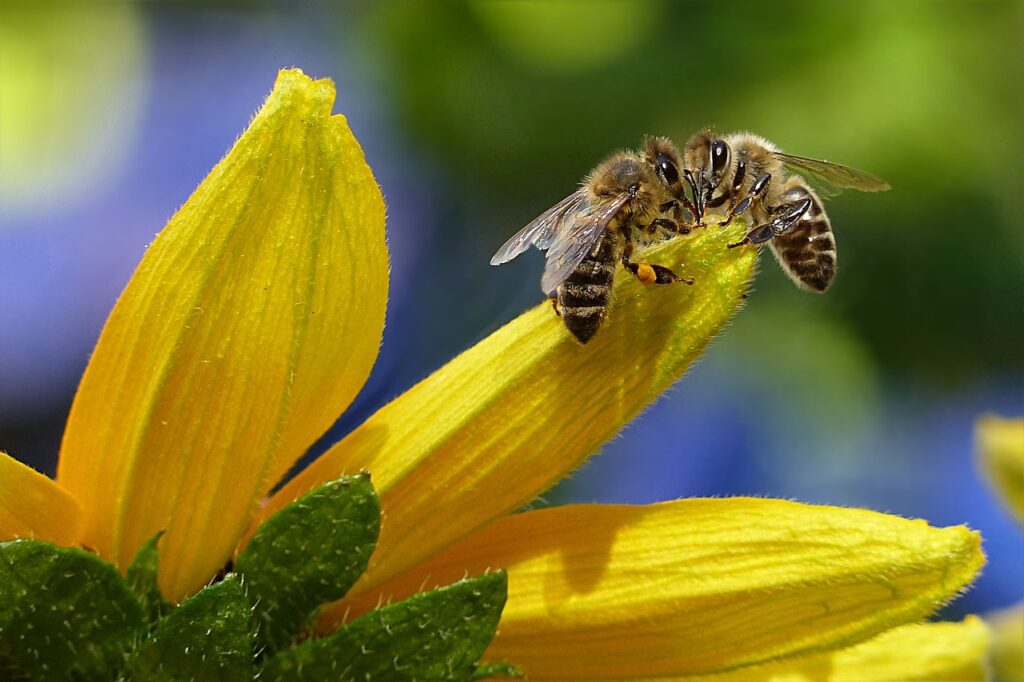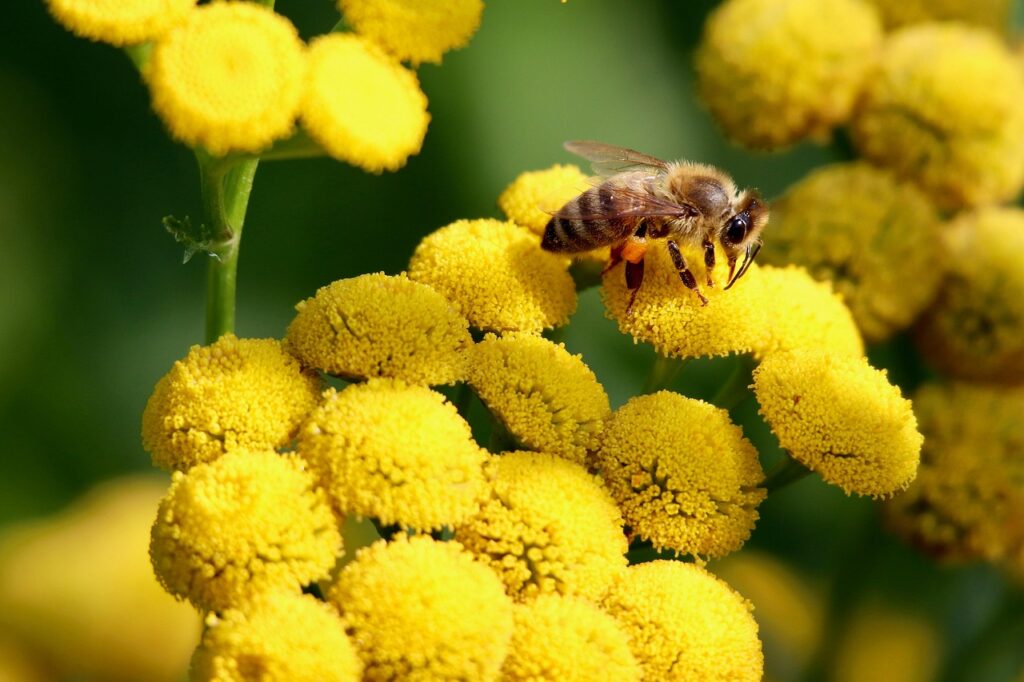Photo by Ralphs Fotos via Pixabay
Creating a bee-friendly garden is one of the most impactful ways homeowners can support local bee populations and promote healthy ecosystems. Bees are crucial pollinators for flowers, vegetables, and fruit trees, so your efforts help far beyond your own backyard.
Key Practices for a Bee-Friendly Garden
- Choose Nectar- and Pollen-Rich Plants
- Opt for native wildflowers, flowering herbs, fruit trees, and shrubs. Excellent options include lavender, bee balm, basil, sage, borage, chives, sunflowers, asters, cone flowers (Echinacea), goldenrod, cosmos, zinnias, rosemary, mints, oregano, thyme, heathers, buckwheat, clovers, and fruit blossoms like cherry, apple, and blueberry.[1][2][3][4]
- Ensure Bloom Diversity
- Provide Water and Habitat
- Avoid Chemicals
- Do not use pesticides, herbicides, or lawn sprays, as these can be highly toxic to bees and other beneficial pollinators. Always communicate with garden service providers about this priority.[11][12][8]
- Reduce artificial night lighting to avoid disrupting insect navigation.[5]
- Grow Pollinator-Friendly Herbs
- Easy-to-grow herbs with dual culinary benefits include marjoram, thyme, chives, sage, rosemary, angelica, and fennel. Most can thrive in pots as well as garden beds.[13]
- Add Variety Beyond Flowers
- Include shrubs and trees that offer abundant blossoms and shelter (maple, willow, black locust, sumac, wild cherry, and more).[3][1]
- Cover crops like clover or vetch also provide off-season forage and soil enrichment.[7]
Simple Steps to Start
- Assess your spot: Note how much sun and shade you get, and choose plant types accordingly.[8]
- Prep your soil: Add compost and edge your beds for healthy growth.[8]
- Plant for waves: Mix mature, flowering plants with seeds so bees have food now and later.[8]
- Water and nurture: Keep transplanted plants well-watered early on, and install a bee pond for hydration.[8]
- Signage matters: Post signs if you need to warn others or avoid accidental spraying nearby.[8]
A bee-friendly garden makes for a beautiful, healthy outdoor space that supports wildlife, agriculture, and the entire environment.
Even a small window box or patio planter filled with herbs or wildflowers helps. Your efforts directly benefit both honeybees and native bee species, many of whom are in decline and need our help.[14]
By planting thoughtfully, avoiding chemicals, and providing water and shelter, you’re inviting pollinators to thrive and securing food and flowers for future generations.
⁂
- https://www.beverlybees.com/planting-bee-garden/
- https://www.gardenary.com/blog/easy-plants-that-attract-bees-and-butterflies-to-the-garden
- https://www.reddit.com/r/bees/comments/10b1o4z/bee_lovers_what_are_the_best_flowers_to_buy_that/
- https://www.petittigardencenter.com/best-plants-to-support-pollinator-bees/
- https://davidsuzuki.org/living-green/how-to-attract-pollinators/
- https://www.fws.gov/story/how-build-pollinator-garden
- https://extension.oregonstate.edu/gardening/pollinators/maintain-bee-friendly-garden-fall-winter-too
- https://www.compostandcava.com/home/diy-bee-garden
- https://www.pollinator.org/bfg
- https://www.reddit.com/r/bee/comments/1h12i6n/how_to_make_my_garden_more_bee_friendly/
- https://www.portlandnursery.com/garden-projects/bee-friendly
- https://xerces.org/blog/how-to-make-pollinator-garden
- https://friendsoftheearth.uk/nature/gardening-bees
- https://xerces.org/pollinator-conservation/pollinator-friendly-plant-lists



